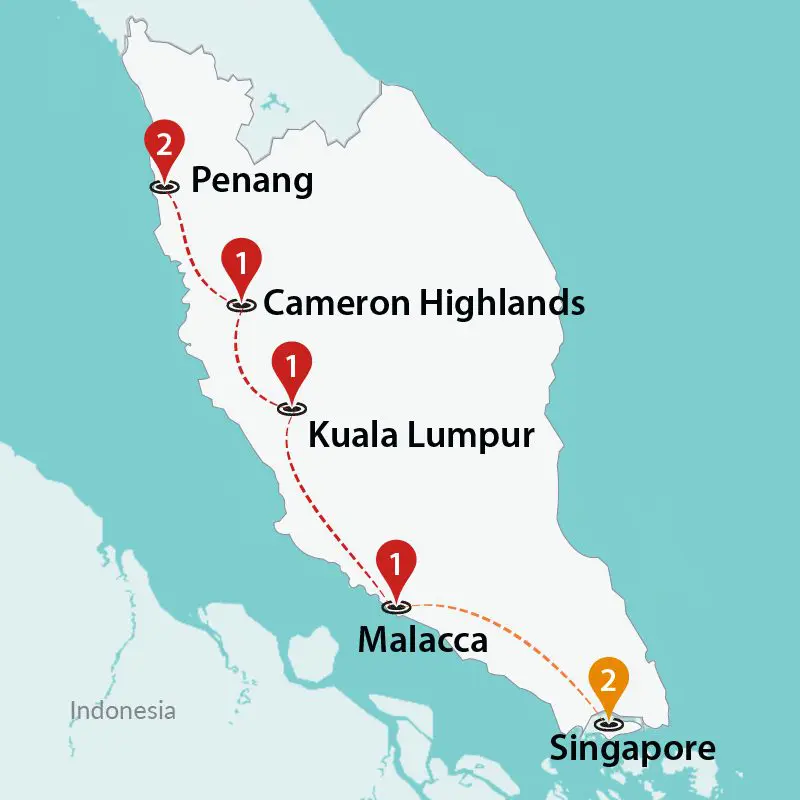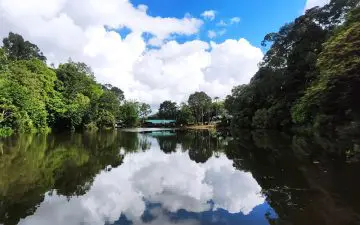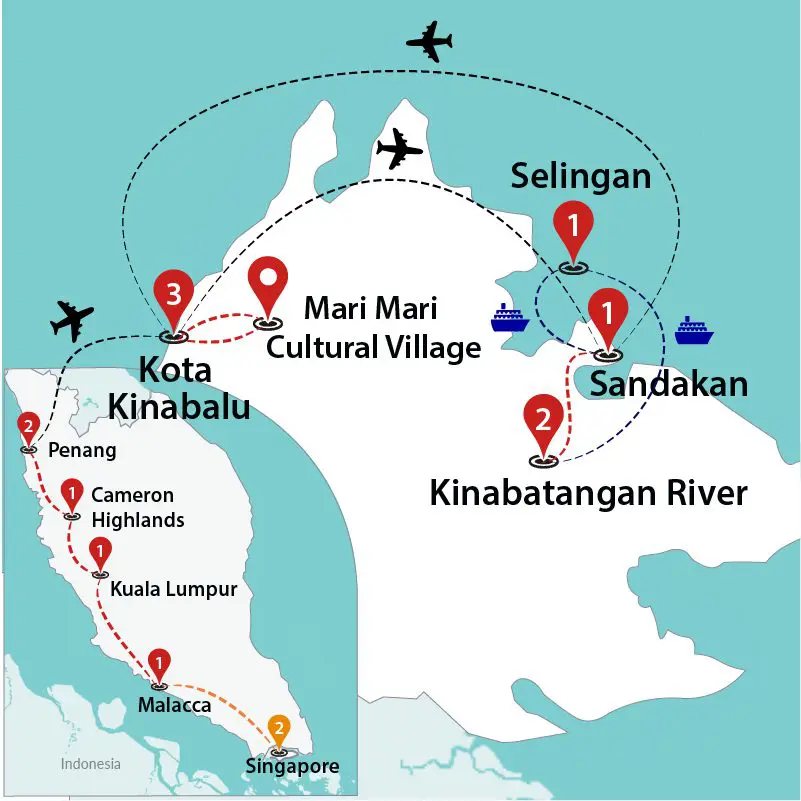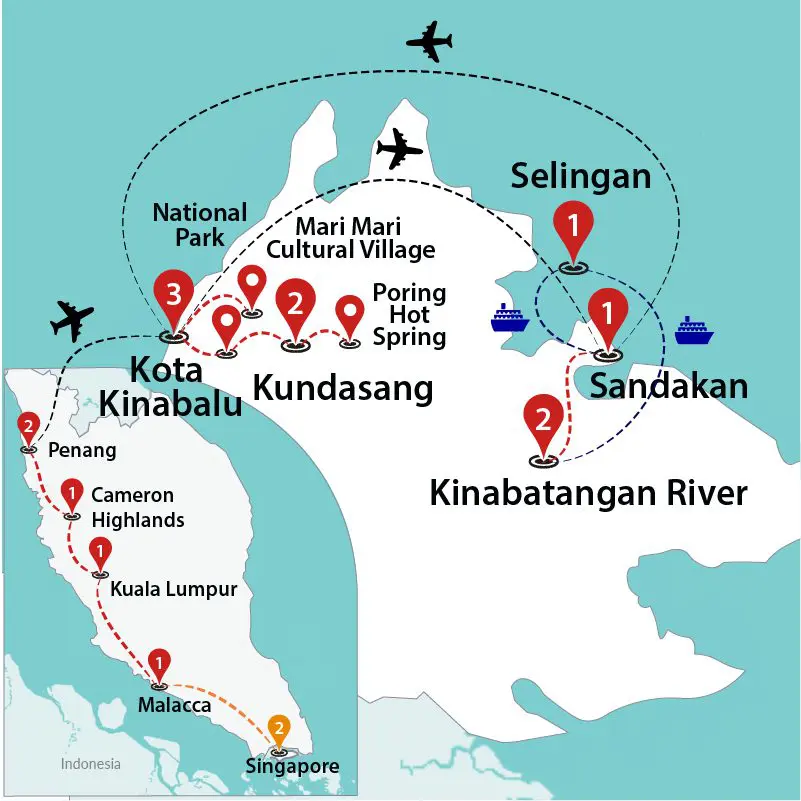Best Time To Visit Singapore
The best time to visit Singapore is typically from February to April when the weather is drier and more pleasant. This is considered the best time to visit Singapore. During this period, you can expect lower humidity and less rainfall. It’s ideal for outdoor activities, sightseeing, and enjoying the many festivals and events, such as Chinese New Year, which usually falls in January or February.
Wet Season (May to November): Singapore experiences heavier rainfall during these months, particularly from November to January. The rain can be intense but often comes in short, heavy bursts. This is also the time when you might encounter thunderstorms. However, the city remains bustling, and you can still enjoy indoor attractions, shopping, and dining.
Haze Season (June to October): In recent years, Singapore has experienced haze due to forest fires in neighboring countries, particularly Indonesia. This can lead to poor air quality, and it’s advisable to check air quality levels if you plan to visit during this period. Take precautions and make it the best time to visit Singapore.
Why You Should Visit Singapore: From its rich cultural diversity and breathtaking gardens at Gardens by the Bay to world-class cuisine that includes street food delights and Michelin-starred restaurants, Singapore is a food lover’s paradise. Thrilling attractions like Universal Studios and Sentosa Island, a futuristic skyline, historical neighborhoods, efficient public transport, and diverse shopping options are among the many draws.
Things to Consider: When visiting Singapore, it’s essential to be aware of entry requirements, the city’s strict laws and customs, and its tropical climate. Stay prepared for frequent rain by packing suitable clothing and an umbrella. Singapore’s excellent public transportation system and the prevalence of English make getting around easy, while cultural sensitivity and respect for local traditions are essential.
Monthly Travel Guide For Singapore
Travelling in Singapore from February to April
Singapore experiences a drier and more pleasant climate during these months. Rainfall is generally lower, and you’re less likely to encounter heavy showers or prolonged rain. The weather is warm but not excessively hot, making it ideal for outdoor activities and sightseeing. February to April is considered the best time to visit Singapore.
Daytime temperatures typically range from 27°C to 33°C (81°F to 91°F), providing a comfortable environment for exploring the city. The evenings are cooler, with temperatures dropping to around 24°C to 26°C (75°F to 79°F).
While Singapore is known for its high humidity throughout the year, it tends to be somewhat lower during this period, making outdoor excursions more enjoyable. You can expect more sunshine, which is perfect for enjoying outdoor attractions, parks, and gardens.

Travelling in Malaysia from May to November
Singapore experiences its two distinct monsoon seasons during this time. The first, the Southwest Monsoon, typically occurs from June to September, bringing heavy rainfall and occasional thunderstorms. The second, the Northeast Monsoon, occurs from November to January, with more intermittent and less intense rainfall.
Singapore remains hot and humid throughout the year, with daytime temperatures ranging from 30°C to 34°C (86°F to 93°F). Evening temperatures stay warm, usually around 24°C to 26°C (75°F to 79°F).
May to November is the wetter season, so you can expect more frequent and heavier rainfall. While the rain usually doesn’t last all day, it can be intense and lead to occasional flooding in certain areas.

Travelling in Singapore from June to October
Due to the wetter weather and high humidity, this period typically sees fewer tourists, which means shorter lines at popular attractions and the possibility of better deals on accommodations.
This time may coincide with cultural festivals like Hari Raya Aidilfitri (Eid al-Fitr) and Deepavali (Diwali), allowing visitors to experience vibrant celebrations and the diverse cultural heritage of Singapore.

Singapore Climate & Weather Guide
| Region | Jan | Feb | Mar | Apr | May | Jun | Jul | Aug | Sep | Oct | Nov | Dec |
|---|---|---|---|---|---|---|---|---|---|---|---|---|
| Colombo | 30°C | 30°C | 31°C | 31°C | 30°C | 30°C | 29°C | 29°C | 29°C | 29°C | 29°C | 30°C |
| Anuradhapura | 29°C | 31°C | 33°C | 34°C | 33°C | 34°C | 33°C | 33°C | 33°C | 32°C | 30°C | 29°C |
| Sigiriya | 29°C | 31°C | 34°C | 35°C | 34°C | 34°C | 34°C | 34°C | 34°C | 33°C | 31°C | 29°C |
| Kandy | 28°C | 30°C | 31°C | 31°C | 30°C | 29°C | 29°C | 29°C | 30°C | 30°C | 28°C | 28°C |
| Nuwara Eliya | 25°C | 26°C | 28°C | 28°C | 27°C | 27°C | 27°C | 27°C | 27°C | 26°C | 25°C | 25°C |
| Polonnaruwa | 29°C | 31°C | 34°C | 35°C | 34°C | 34°C | 34°C | 34°C | 34°C | 33°C | 31°C | 29°C |
| Dambulla | 29°C | 31°C | 34°C | 35°C | 34°C | 34°C | 34°C | 34°C | 34°C | 33°C | 31°C | 29°C |
| Region | Jan | Feb | Mar | Apr | May | Jun | Jul | Aug | Sep | Oct | Nov | Dec |
|---|---|---|---|---|---|---|---|---|---|---|---|---|
| Colombo | 86°F | 87°F | 88°F | 88°F | 87°F | 86°F | 85°F | 85°F | 85°F | 85°F | 85°F | 86°F |
| Anuradhapura | 85°F | 89°F | 93°F | 94°F | 91°F | 90°F | 91°F | 92°F | 92°F | 90°F | 86°F | 84°F |
| Sigiriya | 85°F | 89°F | 94°F | 95°F | 94°F | 94°F | 94°F | 94°F | 94°F | 93°F | 88°F | 85°F |
| Kandy | 73°F | 75°F | 77°F | 78°F | 77°F | 75°F | 75°F | 75°F | 75°F | 75°F | 75°F | 73°F |
| Nuwara Eliya | 77°F | 78°F | 82°F | 82°F | 81°F | 81°F | 81°F | 81°F | 81°F | 78°F | 77°F | 77°F |
| Polonnaruwa | 85°F | 89°F | 94°F | 95°F | 94°F | 94°F | 94°F | 94°F | 94°F | 91°F | 91°F | 85°F |
| Dambulla | 85°F | 89°F | 94°F | 95°F | 94°F | 94°F | 94°F | 94°F | 94°F | 91°F | 91°F | 85°F |
| Region | Jan | Feb | Mar | Apr | May | Jun | Jul | Aug | Sep | Oct | Nov | Dec |
|---|---|---|---|---|---|---|---|---|---|---|---|---|
| Colombo | 38 mm | 47 mm | 64 mm | 102 mm | 246 mm | 260 mm | 209 mm | 208 mm | 158 mm | 202 mm | 175 mm | 104 mm |
| Anuradhapura | 30 mm | 37 mm | 44 mm | 98 mm | 60 mm | 13 mm | 13 mm | 27 mm | 51 mm | 177 mm | 150 mm | 90 mm |
| Sigiriya | 39 mm | 46 mm | 40 mm | 88 mm | 62 mm | 11 mm | 16 mm | 28mm | 45 mm | 192 mm | 153 mm | 99 mm |
| Kandy | 39 mm | 60 mm | 73 mm | 151 mm | 137 mm | 54 mm | 54 mm | 71 mm | 87 mm | 251 mm | 192 mm | 102 mm |
| Nuwara Eliya | 88 mm | 166 mm | 126 mm | 226 mm | 213 mm | 94 mm | 97 mm | 123 mm | 142 mm | 628 mm | 406 mm | 221 mm |
| Polonnaruwa | 39 mm | 46 mm | 40 mm | 88 mm | 62 mm | 11 mm | 16 mm | 28 mm | 45 mm | 192 mm | 153 mm | 99 mm |
| Dambulla | 39 mm | 46 mm | 40 mm | 93 mm | 62 mm | 11 mm | 16 mm | 28 mm | 45 mm | 192 mm | 153 mm | 99 mm |
| Region | Jan | Feb | Mar | Apr | May | Jun | Jul | Aug | Sep | Oct | Nov | Dec |
|---|---|---|---|---|---|---|---|---|---|---|---|---|
| Colombo | 0 | 0 | 0 | 0 | 0 | 0 | 0 | 0 | 0 | 0 | 0 | 0 |
| Anuradhapura | 0 | 0 | 0 | 0 | 0 | 0 | 0 | 0 | 0 | 0 | 0 | 0 |
| Sigiriya | 0 | 0 | 0 | 0 | 0 | 0 | 0 | 0 | 0 | 0 | 0 | 0 |
| Kandy | 0 | 0 | 0 | 0 | 0 | 0 | 0 | 0 | 0 | 0 | 0 | 0 |
| Nuwara Eliya | 0 | 0 | 0 | 0 | 0 | 0 | 0 | 0 | 0 | 0 | 0 | 0 |
| Polonnaruwa | 0 | 0 | 0 | 0 | 0 | 0 | 0 | 0 | 0 | 0 | 0 | 0 |
| Dambulla | 0 | 0 | 0 | 0 | 0 | 0 | 0 | 0 | 0 | 0 | 0 | 0 |
| Region | Jan | Feb | Mar | Apr | May | Jun | Jul | Aug | Sep | Oct | Nov | Dec |
|---|---|---|---|---|---|---|---|---|---|---|---|---|
| Colombo | 9 km/h | 8 km/h | 7 km/h | 7 km/h | 10 km/h | 12 km/h | 11 km/h | 11 km/h | 10 km/h | 8 km/h | 7 km/h | 8 km/h |
| Anuradhapura | 13 km/h | 11 km/h | 9 km/h | 8 km/h | 13 km/h | 17 km/h | 15 km/h | 14 km/h | 13 km/h | 10 km/h | 10 km/h | 13 km/h |
| Sigiriya | 13 km/h | 11 km/h | 9 km/h | 8 km/h | 13 km/h | 17 km/h | 15 km/h | 15 km/h | 14 km/h | 10 km/h | 10 km/h | 13 km/h |
| Kandy | 12 km/h | 10 km/h | 9 km/h | 8 km/h | 12 km/h | 16 km/h | 14 km/h | 14 km/h | 13 km/h | 10km/h | 9 km/h | 11 km/h |
| Nuwara Eliya | 10 km/h | 9 km/h | 9 km/h | 7 km/h | 10 km/h | 15 km/h | 14 km/h | 14 km/h | 12 km/h | 9 km/h | 8 km/h | 10 km/h |
| Polonnaruwa | 14 km/h | 12 km/h | 9 km/h | 8 km/h | 13 km/h | 17 km/h | 16 km/h | 16 km/h | 14 km/h | 10 km/h | 10 km/h | 13 km/h |
| Dambulla | 13 km/h | 10 km/h | 9 km/h | 8 km/h | 12 km/h | 16 km/h | 15km/h | 15 km/h | 13 km/h | 10 km/h | 9 km/h | 12km/h |
When to visit Singapore
Discover Paradise: The Best Time to Visit Singapore – February to April
When it comes to experiencing Singapore’s allure, the period from February to April stands out as the best time to visit. The city-state basks in delightful weather during these months, with lower humidity and minimal rainfall, ensuring that your exploration of its stunning attractions is comfortable and enjoyable. Take in the mesmerizing Gardens by the Bay, immerse yourself in the rich culture of Chinatown, and savor the diverse culinary offerings. Plus, February kicks off with the exuberant Chinese New Year celebrations, filling the city with an explosion of colors and festivities. Don’t miss the chance to revel in the perfect combination of pleasant climate and vibrant culture that makes Singapore an extraordinary destination during this time. Here’s a closer look at why these months are truly the best time to discover Singapore’s magic.
The pleasant weather allows you to explore Singapore’s abundant natural beauty. Gardens by the Bay, with its iconic Supertree Grove and Flower Dome, is a must-visit, and during these months, you can take your time admiring the lush gardens without being overwhelmed by the heat. The vibrant colors of the National Orchid Garden and the serenity of the Singapore Zoo are also best enjoyed during this period.
Tips for visiting Singapore from February to April:
–Pack Light and Comfortable Clothing: Singapore’s weather during these months is warm, so pack lightweight, breathable clothing
–Cultural Respect: If you plan to participate in Chinese New Year festivities or visit temples and cultural sites, dress modestly and respectfully.
– Try Local Delicacies: Singapore is renowned for its street food. Don’t miss the opportunity to sample local dishes like Hainanese chicken rice, chili crab, and laksa. Visit hawker centers for a budget-friendly culinary experience.
– Enjoy Outdoor Activities Early or Late: To avoid the hottest part of the day, plan outdoor activities in the morning or late afternoon. Gardens and parks are especially beautiful during these hours.
–Explore Diverse Neighborhoods: Singapore is a diverse city with unique neighborhoods like Chinatown, Little India, and Kampong Glam. Explore these areas to gain a deeper appreciation of the city’s multicultural identity.
Singapore’s Hidden Gems Await
While Singapore’s dry season from February to April is a well-known tourist favorite, a hidden gem awaits those who choose to visit from June to October. Often overshadowed by concerns about heavy rainfall, these months offer unique advantages for the savvy traveler. Unveiling the best-kept secrets of Singapore’s wetter season, here’s why June to October can be the best time to discover the city’s enchantment.
Nature in Full Bloom: Singapore’s lush greenery flourishes during these months. The heavy but sporadic rains bring life to the city’s many parks and gardens. The stunning Singapore Botanic Gardens and the transformed Jurong Bird Park are vibrant with blooming flora and offer a refreshing contrast to the dry season’s arid landscapes.
Unique Cultural Experiences: Explore Singapore’s rich cultural diversity during the wetter months. Delight in the Hari Raya Puasa festivities, where you can savor mouthwatering Malay delicacies and witness the city’s streets adorned with dazzling lights. Additionally, the Hungry Ghost Festival and the Mid-Autumn Festival reveal Singapore’s spiritual traditions.
Spectacular Indoor Attractions: Singapore’s rainproof offerings are nothing short of extraordinary. Marvel at the unparalleled art collections in the National Gallery, step into the fascinating world of science at the ArtScience Museum, or take in the interactive exhibits at the Singapore Discovery Centre. The wet season encourages deeper exploration of the city’s indoor wonders.
Best things to do in Singapore:
– Visit Gardens by the Bay: This iconic attraction is a horticultural wonderland featuring the mesmerizing Supertree Grove, two colossal conservatories known as the Flower Dome and Cloud Forest, and lush outdoor gardens.
– Marina Bay Sands SkyPark: Head to the Marina Bay Sands complex and ascend to the SkyPark’s observation deck for breathtaking panoramic views of the city’s skyline. This architectural marvel boasts an infinity pool, an observation deck, and an array of restaurants and bars.
– Wander in Chinatown and Little India: Immerse yourself in Singapore’s rich cultural diversity by strolling through the vibrant neighborhoods of Chinatown and Little India. These areas are teeming with colorful streets, historic temples, aromatic food stalls, and bustling markets.
Singapore FAQ
When is the best time to visit Singapore for good weather?
The best time to visit Singapore for good weather is typically from February to April. During these months, Singapore experiences the driest and most pleasant weather of the year. You can expect lower humidity, less rainfall, and comfortable temperatures, making it an ideal time for outdoor activities, sightseeing, and exploring the city’s attractions. This period offers the best conditions for enjoying Singapore’s parks, gardens, and outdoor events.
What is Singapore’s peak tourist season, and when should I avoid the crowds?
Singapore’s peak tourist season generally occurs from November to early January. This period coincides with several major holidays, including Christmas and New Year’s, as well as school vacation breaks in some countries. The city-state becomes quite crowded with tourists during this time, and popular attractions, shopping districts, and hotels may experience higher demand and elevated prices.
Are there specific cultural festivals or events in Singapore that I should plan my visit around?
Singapore hosts a diverse range of cultural festivals throughout the year, making it a fantastic idea to plan your visit around these events. Celebrations like Chinese New Year, Hari Raya Puasa, Deepavali, and Thaipusam showcase the city’s multicultural spirit with vibrant displays, traditional performances, and delicious cuisine. Whether you’re exploring the lively streets of Chinatown, enjoying the beauty of Little India, or joining in the Mid-Autumn Festival fun, these cultural festivities offer a unique and enriching experience for travelers.
Is it advisable to visit Singapore during the monsoon season, and if so, what can I expect?
Visiting Singapore during the monsoon season, which typically occurs from November to January and a wetter period from June to October, is possible but comes with certain considerations. You can expect heavier rainfall, occasional thunderstorms, and high humidity during these months, which may affect outdoor activities. However, the advantages include fewer crowds, potential cost savings, and the opportunity to explore the city’s indoor attractions, cultural festivals, and diverse cuisine. With suitable rain gear and indoor plans, a trip during the monsoon season can still be enjoyable for budget-conscious travelers and those looking for unique cultural experiences.
What should I pack for a trip to Singapore during different seasons?
When packing for a trip to Singapore, consider the season you’ll be visiting. In the dry season from February to April, pack lightweight and breathable clothing, comfortable shoes, and sun protection. In the wet season from June to October, prioritize quick-drying clothing, waterproof shoes, and rain gear. Common items for both seasons include an umbrella, insect repellent, and basic toiletries. Keep in mind Singapore’s casual dress code and the need for travel documents. Travelers should also adapt their packing list to their specific plans and preferences for activities like beach visits, sightseeing, and cultural events.
How many days do you need to visit Singapore?
The ideal duration for a trip to Singapore often ranges from 3 to 5 days to fully explore the city’s main attractions. In this time, you can visit iconic sites like Gardens by the Bay, Sentosa Island, Chinatown, and Little India, as well as enjoy the local cuisine. However, the length of your stay depends on your interests and the depth of your exploration, as Singapore offers a wide range of cultural experiences, outdoor activities, and a thriving culinary scene.
What is the coldest month in Singapore?
Singapore has a consistently warm and humid tropical climate, so it doesn’t experience distinct cold months. The city’s temperature remains relatively consistent throughout the year, with average temperatures ranging from 24°C to 31°C (75°F to 88°F). While there is variation, there’s no specific “cold” month in Singapore. Instead, the city experiences a wetter season with more rainfall and a drier season with less rain, but temperatures remain relatively warm year-round.
What are the best cities to visit in Singapore?
Singapore is a compact city-state, and it doesn’t have traditional cities within it. Instead, it’s divided into districts and neighborhoods, each offering unique experiences. Marina Bay is famous for its iconic landmarks and waterfront views, while Chinatown and Little India showcase the city’s rich cultural diversity. Kampong Glam highlights Middle Eastern influences, and Sentosa Island is a resort destination with family-friendly attractions. Orchard Road is a shopping haven, and East Coast Park is perfect for outdoor enthusiasts. Explore these distinct areas to enjoy the full spectrum of what Singapore has to offer.
Is it safe to travel to Singapore?
Yes, Singapore is generally considered a safe destination for travelers. The city-state maintains a low crime rate, and its strict laws contribute to a safe and secure environment. However, as with any travel destination, it’s essential to exercise common-sense precautions like safeguarding your belongings and being aware of your surroundings. Singapore’s healthcare and emergency services are highly reliable, providing additional peace of mind for travelers. It’s a destination known for its cleanliness, efficient public transportation, and welcoming atmosphere, making it an excellent choice for safe and enjoyable travel.
What are the most beautiful places in Singapore?
Singapore boasts numerous beautiful places that captivate visitors. The Gardens by the Bay is a futuristic marvel with its Supertree Grove and stunning flower domes. Sentosa Island offers picturesque beaches, family-friendly attractions, and cable car rides with breathtaking views. The Marina Bay Sands SkyPark provides a panoramic skyline view, while Chinatown and Little India are rich in culture and color. The historic district of Kampong Glam, with its Sultan Mosque and unique shops, is equally captivating. Exploring these places allows travelers to witness the diverse beauty that Singapore has to offer.
Does Singapore have nightlife?
Yes, Singapore has a vibrant and diverse nightlife scene. From rooftop bars with stunning city views to bustling night markets, there’s something for everyone. Clarke Quay and Boat Quay offer an array of bars and clubs along the Singapore River. Ann Siang Hill and Keong Saik Road are known for their trendy cocktail bars and chic restaurants. Additionally, you can explore the night markets in areas like Chinatown and Bugis, or enjoy late-night dining at hawker centers. Singapore’s nightlife caters to various tastes, whether you’re into live music, dancing, or simply enjoying a drink with a view.
Which airlines fly directly into Singapore?
Several major airlines offer direct flights to Singapore’s Changi Airport (SIN) from various destinations around the world. Some of the notable carriers include Singapore Airlines, Cathay Pacific, Emirates, Qatar Airways, British Airways, Qantas, and United Airlines, among others. Changi Airport is one of the busiest and most well-connected airports in the world, providing excellent accessibility to Singapore from many global cities.
What is Singapore famous for?
Singapore is renowned for its modern skyline, efficient infrastructure, and futuristic Gardens by the Bay, including the iconic Supertree Grove. It’s also celebrated for its diverse and vibrant culture, with neighborhoods like Chinatown, Little India, and Kampong Glam offering unique cultural experiences.
The city-state is famous for its cleanliness, safety, and strict laws, which contribute to its excellent quality of life. Additionally, Singapore is a hub for culinary enthusiasts, offering a wide range of local and international cuisines, from hawker stalls to Michelin-starred restaurants
What is the best time to eat delicious food in Singapore?
The best time to indulge in delicious food in Singapore is year-round due to its vibrant culinary scene. However, many visitors prefer to explore the city’s diverse gastronomic offerings during the dry season from February to April, as outdoor dining and street food are particularly enjoyable in pleasant weather. Additionally, this period often coincides with major cultural festivals, providing a fantastic opportunity to savor traditional dishes. Regardless of the season, Singapore’s hawker centers, local eateries, and Michelin-starred restaurants offer delectable dishes that cater to various tastes and budgets, making every visit a delightful culinary adventure.
Singapore by Season
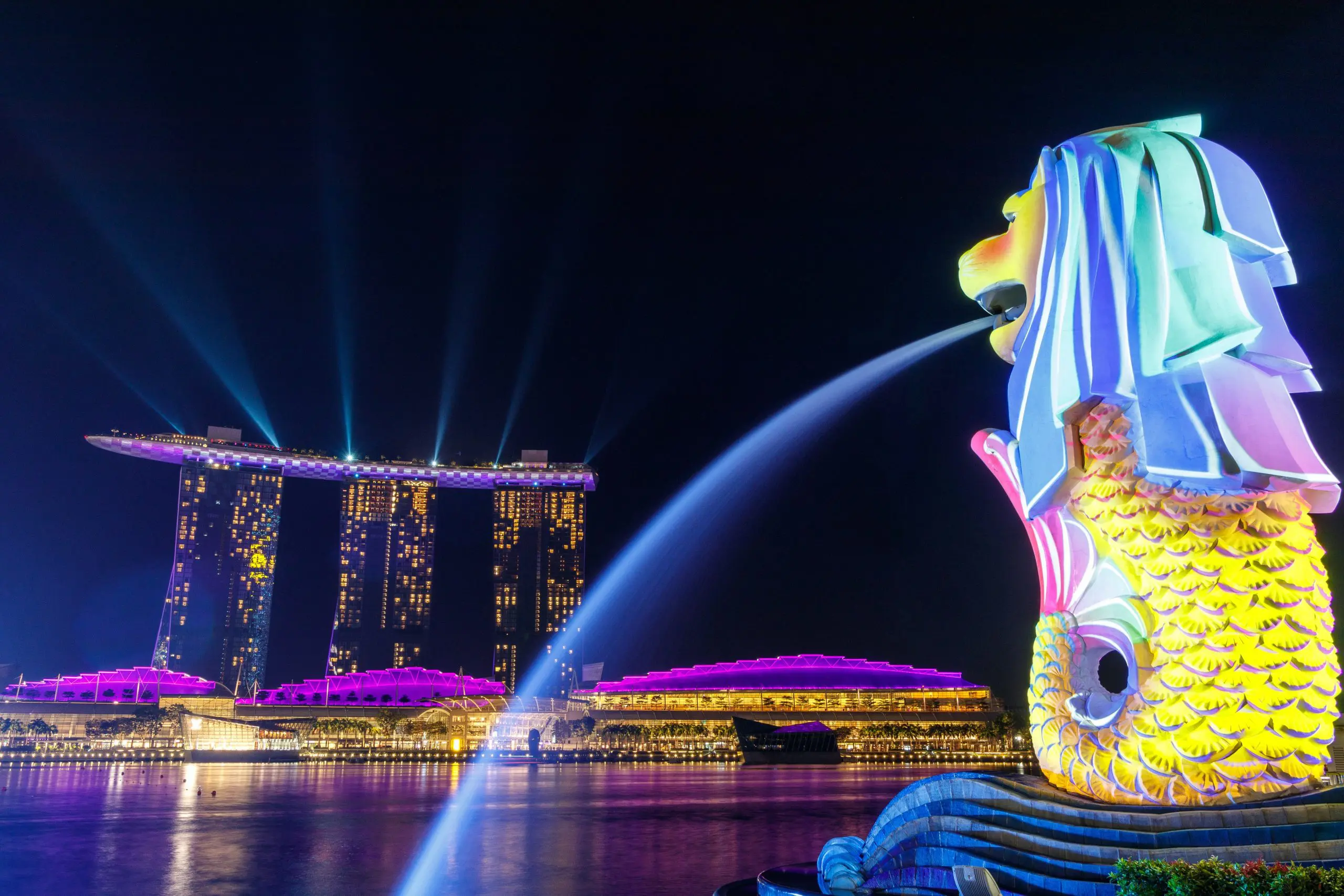
Winter
Traveling to Singapore in the winter, which falls between December and February, is a wonderful experience.
You can enjoy iconic landmarks like Marina Bay Sands and Gardens by the Bay without the sweltering heat. The winter season also brings pleasant evenings, perfect for alfresco dining at hawker centers and experiencing the city’s vibrant nightlife.
Best Things to do in Singapore in winter:
Take a leisurely cruise along the Singapore River. Explore the holiday decorations and fantastic shopping opportunities along Orchard Road, a retail haven.

Spring
This season is characterized by warm and relatively dry weather, making it a fantastic time for outdoor exploration. The city’s parks and gardens, like the Singapore Botanic Gardens and Gardens by the Bay, burst with vibrant colors as flowers bloom and trees come to life.
Spring is considerably the best time to visit Singapore. One of the key highlights of visiting Singapore in the spring is the celebration of Songkran, the Thai New Year, and Vesak Day, a significant Buddhist holiday. During these occasions, you can witness traditional processions, temple ceremonies, and vibrant displays of cultural heritage.
Best Things to do in Singapore in spring:
Take advantage of the comfortable weather to explore the city on two wheels. Revel in the vibrant flora and picturesque landscapes at the Singapore Botanic Gardens.
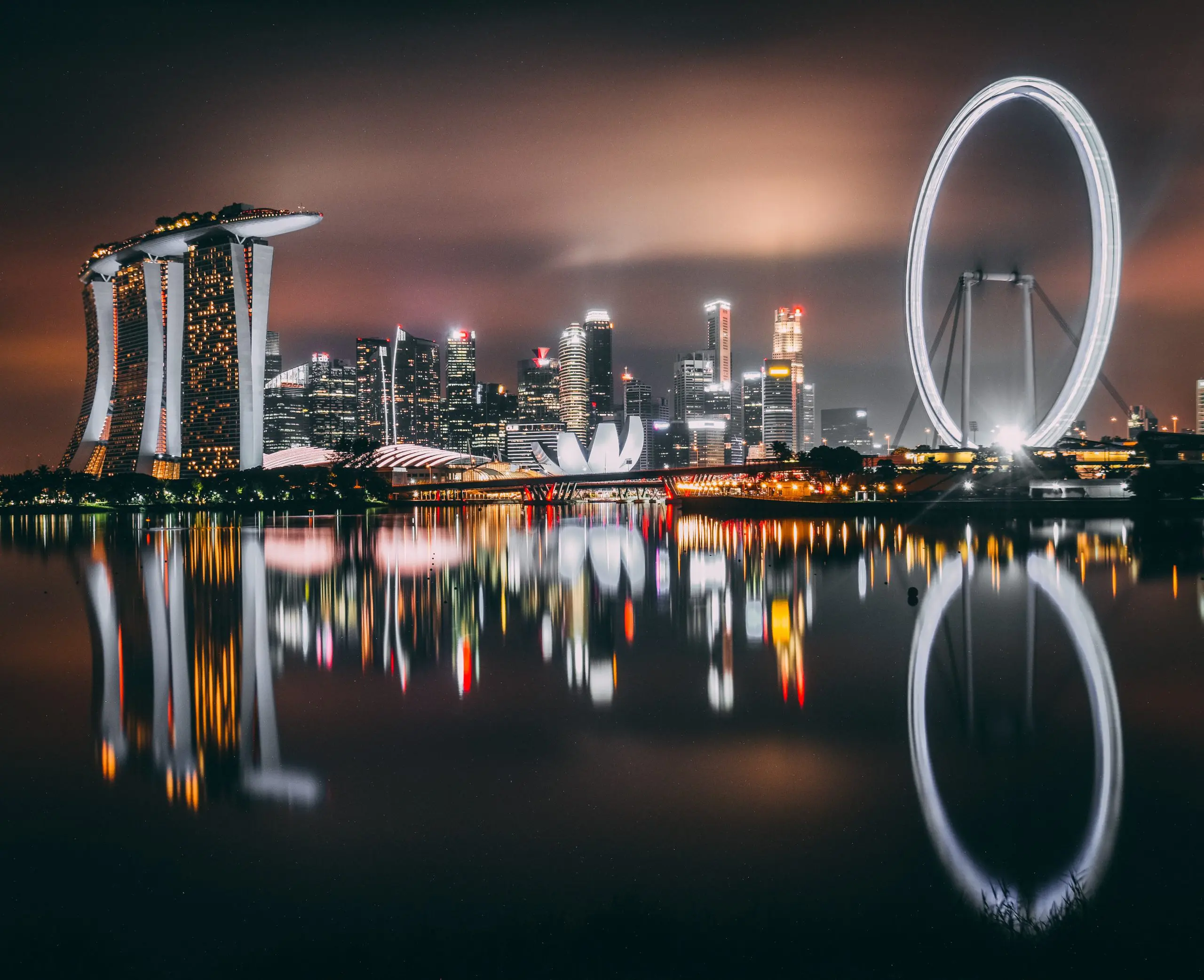
Summer
While the weather can be challenging during the summer monsoon, it also provides the opportunity to explore Singapore’s indoor attractions and enjoy the vibrant cultural festivals that take place. The Great Singapore Sale, one of the city’s biggest shopping events, offers fantastic deals on retail items, making it a paradise for shoppers during the summer months.
One of the key highlights of visiting Singapore in the summer is the opportunity to witness the Hungry Ghost Festival, a Taoist celebration. During this period, streets come alive with performances, and traditional offerings are made to wandering spirits.
Best Things to do in Singapore in summer:
Singapore offers a wealth of indoor attractions, such as the ArtScience Museum, National Museum, and Singapore Discovery Centre. Visit cultural enclaves like Chinatown, Little India, and Kampong Glam to discover the diverse heritage of Singapore’s neighborhoods.
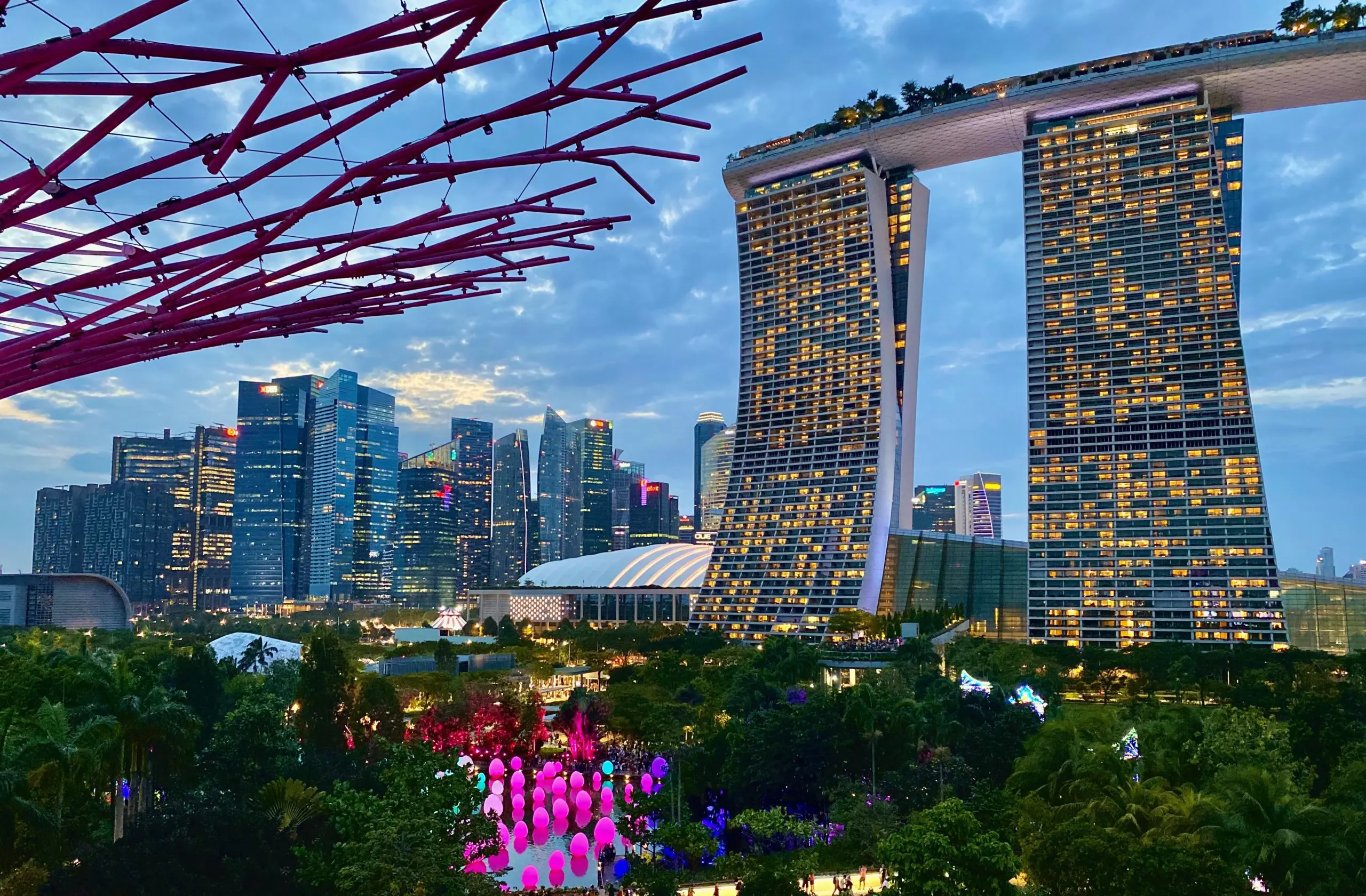
Autumn
Traveling to Singapore during what roughly corresponds to autumn in other parts of the world, from September to November, provides a fantastic opportunity to experience the city’s unique cultural festivities and delightful weather.
Best Things to do in Singapore in autumn:
Witness the enchanting Mid-Autumn Festival, celebrated with vibrant lantern displays, mooncakes, and cultural performances at locations like Chinatown and Gardens by the Bay.
 Black Friday: 60% Off
Black Friday: 60% Off Croatia Sailing : Save up to 60%
Croatia Sailing : Save up to 60% Ski Bansko : 60% Off
Ski Bansko : 60% Off Central & Eastern Europe Tours: 60% Off
Central & Eastern Europe Tours: 60% Off  Why Travel Talk
Why Travel Talk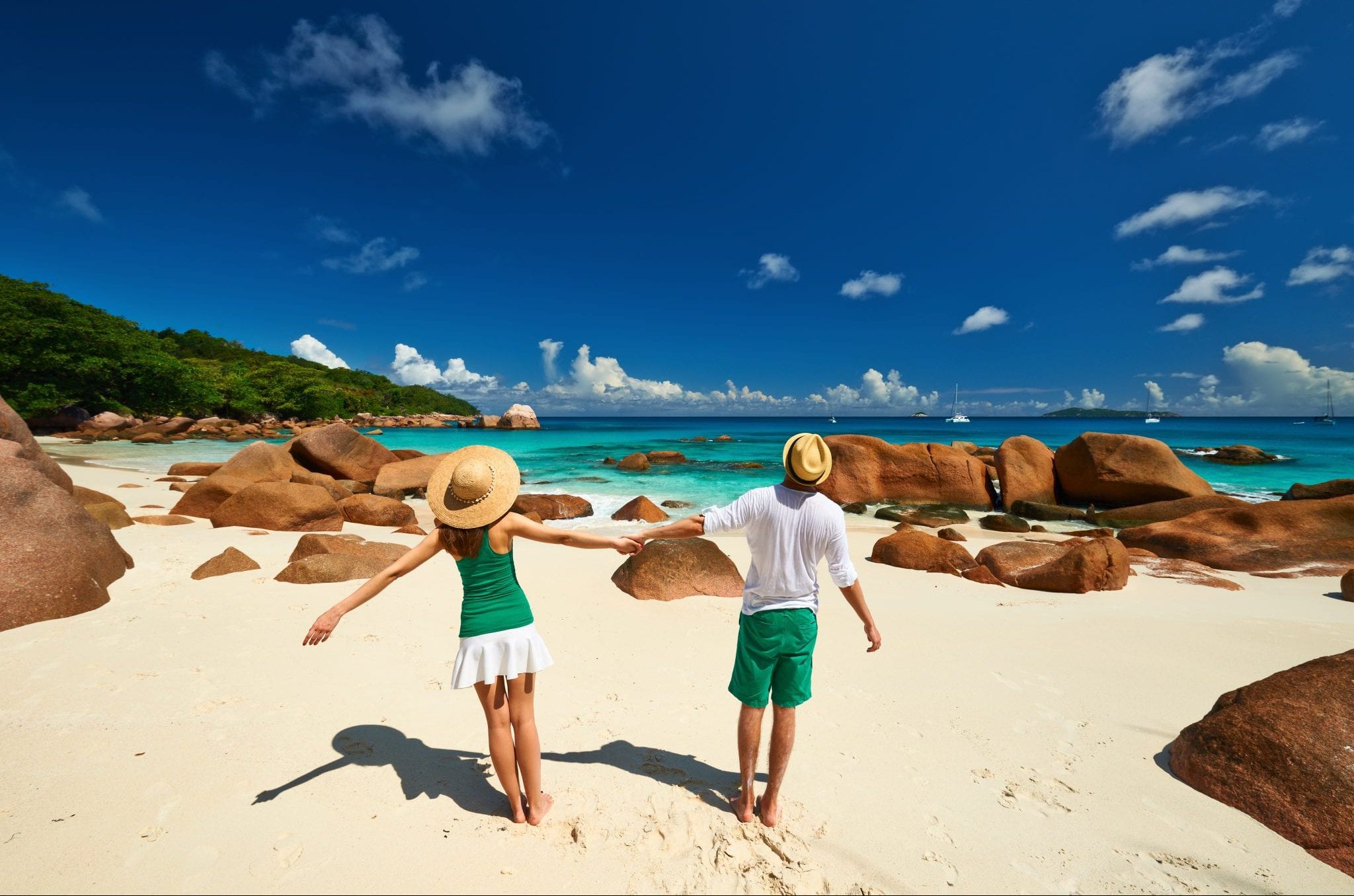 Travel Talk Blog
Travel Talk Blog Responsible Travel
Responsible Travel Fair Travels with Travel Talk
Fair Travels with Travel Talk
